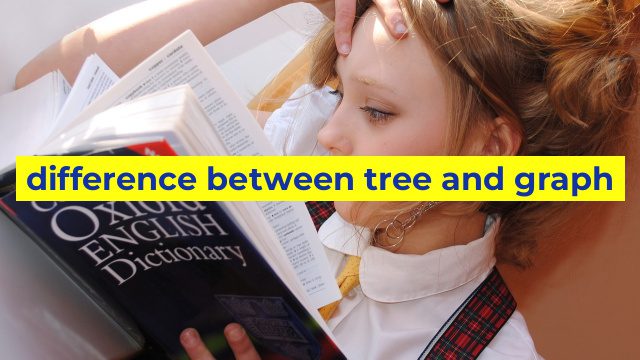Understanding the Difference between Tree and Graph in Computer Science
When it comes to computer science, two of the most basic data structures that one should be familiar with are the tree and the graph. Both structures are used to store and organize data but they work in very different ways. Let’s take a closer look at the difference between trees and graphs.
Trees
A tree is a hierarchical data structure with a set of nodes connected by edges. The topmost node in the tree is called the root and each node in the tree has a unique path from the root. The nodes that are directly connected to each other are called children and their parent node is the node they are directly connected to. Tree structures are used to represent hierarchical relationships such as the file system of an operating system, family trees, or organization charts.
One of the key characteristics of trees is that they contain no cycles, meaning that it is impossible to move from one node and travel back along a path of edges to the same node without passing through a node more than once. The depth of a node in a tree is the length of the path from the root node to that node.
Graphs
A graph, on the other hand, is a non-hierarchical data structure consisting of a set of nodes connected by edges. Unlike trees, graphs may contain cycles or loops. Graphs are used to represent a wide variety of relationships such as network topologies, social networks, or road networks.
Unlike tree structures, there is no hierarchy in a graph. Each node in a graph may have connections to any number of other nodes, not just its direct neighbors. Graphs can also be directed or undirected. In a directed graph, the edges have a specific direction and each node has a set of incoming and outgoing edges. In an undirected graph, the edges connect the nodes in both directions.
Conclusion
In summary, the difference between a tree and a graph lies in their structure and connectivity. Trees are hierarchical structures that contain no cycles while graphs are non-hierarchical structures that may contain cycles. Understanding the difference between these two data structures is essential when working with complex data and designing algorithms for various applications.
Table difference between tree and graph
| Feature | Tree | Graph |
|---|---|---|
| Definition | A type of data structure that represents a hierarchical structure with a single root node and a series of child nodes connected to it. | A collection of nodes (also known as vertices) that are connected by edges or arcs, with no single root node and no hierarchical structure. |
| Type of connections | One-to-many, with each node having only one parent node and multiple child nodes. | Many-to-many, with each node having multiple incoming and outgoing edges connecting it to other nodes. |
| Directionality of connections | Unidirectional, with the connections going only from parent to child nodes. | Can be either directed (having arrows indicating the direction of the edges) or undirected (having no arrows). |
| Cycle detection | Can be easily detected by checking for nodes with more than one parent or by traversing the tree and keeping track of visited nodes. | Can be more complex to detect, as cycles can occur in any direction and can involve multiple nodes. |
| Applications | Commonly used to represent hierarchical data such as file systems, family trees, or organizational charts. | Used in a wide range of applications, such as social networks, transportation networks, computer networks, and many more. |

